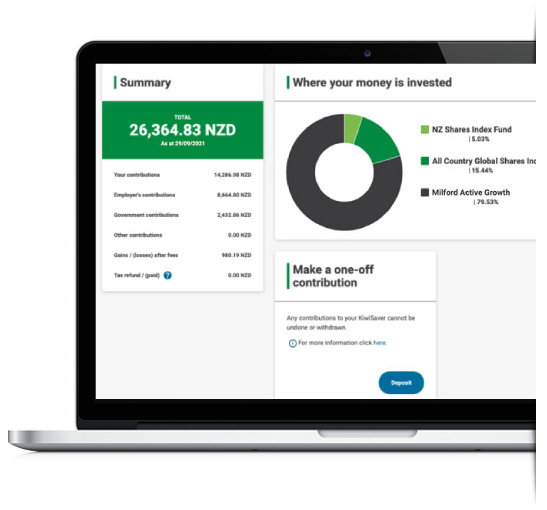
InvestNow Market Wrap-Up: September 2025
Welcoming Tom Deacon, Assistant Portfolio Manager at Mint, as this month’s guest author of the InvestNow Market Wrap-Up.
Rates Divergence, Parabolic AI, and U.S. Policy
Markets Snapshot
September was a mixed month for global markets. U.S. equities extended their run with the S&P 500 up ~3.6% as investors saw a relatively robust economy supported by dominant AI. Europe gained modestly, while Japan and emerging markets paused after strong prior months. Australia went the other way – the S&P/ASX 200 fell ~0.8%, dragged down by an inflation surprise and a re-pricing in interest-rate expectations. Only Materials and Utilities finished higher. New Zealand outperformed. The S&P/NZX 50 rose ~2.8% in September and ~5.5% for the quarter, its best three-month stretch since 2021. REITs and mid-caps led the way as lower yields supported valuations and momentum in cyclicals.
Rates — Divergence Across the Tasman
Economic data was divergent across the Tasman. New Zealand’s unemployment rate stabilised, and consumer-confidence readings improved modestly albeit with a weak GDP print alongside. In contrast, Australian retail sales came in flat for August, while the labour-market participation rate fell slightly, hinting at a cooling trend.
In Australia, the CPI print landed hotter than expected, with services inflation the main culprit. The trimmed-mean measure — the RBA’s preferred gauge — rose ~0.9% quarter-on-quarter, well above the central bank’s ~0.6% forecast. Wage growth also ticked higher reinforcing the ‘sticky services’ narrative. As a result, traders pushed out rate-cut expectations deep into 2026 with the probability of a hike creeping into futures pricing.
The reaction in equities was swift. Interest-sensitive sectors sold off with Consumer Staples, Healthcare and Communication Services all finishing the month lower. Utilities and Materials were the only sectors to post gains.
Once the dust had settled, small caps, momentum and value factors all outperformed. The Small Ords Index beat the S&P/ASX 100 by almost 5% for the month, extending a strong quarter. Within financials, banks were mixed: the majors remained range bound as funding costs steadied, while regional lenders gained modestly on better net interest margins.
In New Zealand, the inflation picture is moving in the right direction. The RBNZ held the Official Cash Rate steady at 3%, with language leaning more dovish. Bond yields drifted lower, and the yield curve flattened further. That environment supported a continued rally in income and property names. The S&P/NZX All Real Estate Index was up more than 14% for the quarter, its strongest since 2009.
Artificial Intelligence — Going Parabolic
Across sectors, companies are allocating capex to AI. Investment is flowing into data centres, the energy systems that power them and cloud infrastructure/service providers. In the US, AI exposure is causing stock valuations to go parabolic in some cases.
That said, on the ASX tech performance was mixed with the sector overall declining ~2%. Investors continued rotating toward firms with tangible exposure to the AI ecosystem — data-centre operators, network services, industrial automation, and semiconductors — rather than pure-software.
The broader implication is that AI is now a productivity and GDP driver, not just thematic. In mining and logistics, machine-learning models are improving throughput and reducing maintenance costs. In services, back-office automation is starting to show up in margin trends. The first measurable gains are coming from companies that blend physical assets with data-driven optimisation.
New Zealand echoed that trend at a smaller scale. IFT, through its stake in Canberra Data Centres (CDC), remain well positioned to capture expanding compute requirements, particularly in the Australian market. CNU’s commentary around surging data usage highlighted real-world demand for network capacity.
Economic data further support the structural case. Australian business-investment surveys show a growing share of spending earmarked for digital and automation projects, even as overall confidence softens. Meanwhile across both markets, energy-market data points to sustained increases in electricity-demand forecasts, driven by data-centre construction.
We see AI beginning to influence employment, energy, and industrial-policy planning — a signal that this is an early-stage secular investment rather than a passing market hype cycle.
U.S. Critical Minerals Policy and Gold Fever
U.S. policy, as in many of the months since President Trumps inauguration, remained a focus area for investors. The theme in September centred on U.S. efforts to secure critical-mineral supply chains. The geopolitical backdrop remains interesting: Washington continues to prioritise resource, manufacturing and supply chain independence. Allied producers and integrated firms are benefiting from this thematic.
Australia is well positioned here as the ‘lucky country’. The Materials sector rose more than 6% in September, making it the only consistent outperformer. Lithium, rare-earths, and copper producers also gained as spot prices turned higher. Supply concerns from Chinese production curbs and U.S. demand guarantees through the Inflation Reduction Act boosted demand for exposure amongst investors. The policy mix of tariffs, tax credits, and strategic-stockpiling commitments effectively placed a floor under critical-mineral pricing.
A Dynamic Environment for Investors
September reminded investors that policy, technology, and inflation are pulling markets in different directions all at once. Australia is navigating the most complex mix: sticky inflation, delayed rate relief, and a resource-driven equity market. New Zealand, in contrast, is enjoying an increasingly stimulatory monetary environment which is helping stabilise cyclical and property-market sectors which in turn is supporting sentiment.
The AI investment wave continues to rewire all economies underneath the surface — changing corporate spending priorities, labour demand, and electricity usage patterns.
We see markets transitioning from a liquidity-driven phase to a fundamentals-driven one. Inflation, policy, and structural investment themes — not rate-cut speculation — are setting the agenda. As always, that means staying active.
If you want to learn more about the Mint funds available on InvestNow, please visit their page on our website.

InvestNow Market Wrap-Up: September 2025
Welcoming Tom Deacon, Assistant Portfolio Manager at Mint, as this month’s guest author of the InvestNow Market Wrap-Up.
Rates Divergence, Parabolic AI, and U.S. Policy
Markets Snapshot
September was a mixed month for global markets. U.S. equities extended their run with the S&P 500 up ~3.6% as investors saw a relatively robust economy supported by dominant AI. Europe gained modestly, while Japan and emerging markets paused after strong prior months. Australia went the other way – the S&P/ASX 200 fell ~0.8%, dragged down by an inflation surprise and a re-pricing in interest-rate expectations. Only Materials and Utilities finished higher. New Zealand outperformed. The S&P/NZX 50 rose ~2.8% in September and ~5.5% for the quarter, its best three-month stretch since 2021. REITs and mid-caps led the way as lower yields supported valuations and momentum in cyclicals.
Rates — Divergence Across the Tasman
Economic data was divergent across the Tasman. New Zealand’s unemployment rate stabilised, and consumer-confidence readings improved modestly albeit with a weak GDP print alongside. In contrast, Australian retail sales came in flat for August, while the labour-market participation rate fell slightly, hinting at a cooling trend.
In Australia, the CPI print landed hotter than expected, with services inflation the main culprit. The trimmed-mean measure — the RBA’s preferred gauge — rose ~0.9% quarter-on-quarter, well above the central bank’s ~0.6% forecast. Wage growth also ticked higher reinforcing the ‘sticky services’ narrative. As a result, traders pushed out rate-cut expectations deep into 2026 with the probability of a hike creeping into futures pricing.
The reaction in equities was swift. Interest-sensitive sectors sold off with Consumer Staples, Healthcare and Communication Services all finishing the month lower. Utilities and Materials were the only sectors to post gains.
Once the dust had settled, small caps, momentum and value factors all outperformed. The Small Ords Index beat the S&P/ASX 100 by almost 5% for the month, extending a strong quarter. Within financials, banks were mixed: the majors remained range bound as funding costs steadied, while regional lenders gained modestly on better net interest margins.
In New Zealand, the inflation picture is moving in the right direction. The RBNZ held the Official Cash Rate steady at 3%, with language leaning more dovish. Bond yields drifted lower, and the yield curve flattened further. That environment supported a continued rally in income and property names. The S&P/NZX All Real Estate Index was up more than 14% for the quarter, its strongest since 2009.
Artificial Intelligence — Going Parabolic
Across sectors, companies are allocating capex to AI. Investment is flowing into data centres, the energy systems that power them and cloud infrastructure/service providers. In the US, AI exposure is causing stock valuations to go parabolic in some cases.
That said, on the ASX tech performance was mixed with the sector overall declining ~2%. Investors continued rotating toward firms with tangible exposure to the AI ecosystem — data-centre operators, network services, industrial automation, and semiconductors — rather than pure-software.
The broader implication is that AI is now a productivity and GDP driver, not just thematic. In mining and logistics, machine-learning models are improving throughput and reducing maintenance costs. In services, back-office automation is starting to show up in margin trends. The first measurable gains are coming from companies that blend physical assets with data-driven optimisation.
New Zealand echoed that trend at a smaller scale. IFT, through its stake in Canberra Data Centres (CDC), remain well positioned to capture expanding compute requirements, particularly in the Australian market. CNU’s commentary around surging data usage highlighted real-world demand for network capacity.
Economic data further support the structural case. Australian business-investment surveys show a growing share of spending earmarked for digital and automation projects, even as overall confidence softens. Meanwhile across both markets, energy-market data points to sustained increases in electricity-demand forecasts, driven by data-centre construction.
We see AI beginning to influence employment, energy, and industrial-policy planning — a signal that this is an early-stage secular investment rather than a passing market hype cycle.
U.S. Critical Minerals Policy and Gold Fever
U.S. policy, as in many of the months since President Trumps inauguration, remained a focus area for investors. The theme in September centred on U.S. efforts to secure critical-mineral supply chains. The geopolitical backdrop remains interesting: Washington continues to prioritise resource, manufacturing and supply chain independence. Allied producers and integrated firms are benefiting from this thematic.
Australia is well positioned here as the ‘lucky country’. The Materials sector rose more than 6% in September, making it the only consistent outperformer. Lithium, rare-earths, and copper producers also gained as spot prices turned higher. Supply concerns from Chinese production curbs and U.S. demand guarantees through the Inflation Reduction Act boosted demand for exposure amongst investors. The policy mix of tariffs, tax credits, and strategic-stockpiling commitments effectively placed a floor under critical-mineral pricing.
A Dynamic Environment for Investors
September reminded investors that policy, technology, and inflation are pulling markets in different directions all at once. Australia is navigating the most complex mix: sticky inflation, delayed rate relief, and a resource-driven equity market. New Zealand, in contrast, is enjoying an increasingly stimulatory monetary environment which is helping stabilise cyclical and property-market sectors which in turn is supporting sentiment.
The AI investment wave continues to rewire all economies underneath the surface — changing corporate spending priorities, labour demand, and electricity usage patterns.
We see markets transitioning from a liquidity-driven phase to a fundamentals-driven one. Inflation, policy, and structural investment themes — not rate-cut speculation — are setting the agenda. As always, that means staying active.
If you want to learn more about the Mint funds available on InvestNow, please visit their page on our website.


Leave A Comment